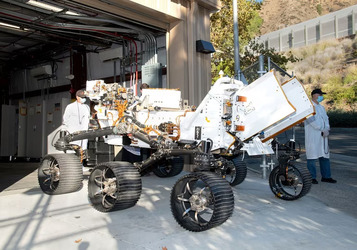The week's pick
Random Articles
Reseach Article
Applying Image Fusion Technique with MRFKMC for Change Detection in SAR Images
| Communications on Applied Electronics |
| Foundation of Computer Science (FCS), NY, USA |
| Volume 2 - Number 4 |
| Year of Publication: 2015 |
| Authors: Vasireddy Pravalya, J Krishna Chaithanya, T. Ramashri |
 10.5120/cae2015651741
10.5120/cae2015651741
|
Vasireddy Pravalya, J Krishna Chaithanya, T. Ramashri . Applying Image Fusion Technique with MRFKMC for Change Detection in SAR Images. Communications on Applied Electronics. 2, 4 ( July 2015), 38-42. DOI=10.5120/cae2015651741
Abstract
In this paper, a novel framework for change detection in synthetic aperture radar (SAR) images based on image fusion and clustering algorithms have been carried out. The significance of image fusion technique is to generate a difference image (DI) by using complementary information from a mean-ratio image and a log-ratio image. Dual - tree complex discrete wavelet transform (DTCWT) fusion technique is considered in this paper. To restrain the background information and enhance the information of changed regions in the fused image, DTCWT fusion algorithm is applied on ratio images. The approach then classifies changed and unchanged regions by Markov random field K-means (MRFKMC) clustering algorithm. Theoretical analysis experiments are carried out on SAR images by applying MRFKMC and compared the results with MRFFCM.
References
- Maoguo Gong; Linzhi Su; MengJia; Weisheng Chen,"Fuzzy Clustering With a Modified MRF Energy Function for Change Detection in Synthetic Aperture Radar Images," Fuzzy Systems, IEEE Transactions on vol.22, no.1, pp.98,109, Feb. 2014.
- L. Bruzzone and D. F. Prieto, “An adaptive semiparametric and contextbased approach to unsupervised change detection in multi-temporal remote-sensing images,” IEEE Trans. Image Process., vol. 11, no. 4, pp. 452–466, Apr. 2002.
- M. Sezgin and B. Sankur “A survey over image thresholding techniques and quantitative performance evaluation” 2004.
- J. C. Bezdek, Pattern Recognition with Fuzzy Objective Function. New York: Plenum, 1981.
- S. P. Chatzis and T. A. Varvarigou, “A fuzzy clustering approach toward hidden Markov random field models for enhanced spatially constrained image segmentation,” IEEE Trans. Fuzzy Syst., vol. 16, no. 5, pp. 1351– 1361, Oct. 2008.
- S. Liu, X. Li, and Z. Li, “A new image segmentation algorithm based the fusion of Markov random field and fuzzy c-means clustering,” in Proc. IEEE Int. Symp. Commun. Inf. Technol., Oct. 2005, vol. 1, pp. 144–147.
- W. Cai, S. Chen, and D. Zhang, “Fast and robust fuzzy C-means clustering algorithms incorporating local information for image segmentation,” Pattern Recog., vol. 40, no. 3, pp. 825–838, Mar. 2007.
- S. Krinidis and V. Chatzis, “A robust fuzzy local information C-means clustering algorithm,” IEEE Trans. Image Process., vol. 19, no. 5, pp. 1328–1337, May 2010.
- D. Rey, G. Subsol, H.Delingette, andN.Ayache, “Automatic detection and segmentation of evolving processes in 3D medical images: Application to multiple sclerosis,” Med. Image Anal., vol. 6, no. 2, pp. 163–179, Jun. 2002.
- D. M. Tsai and S. C. Lai, “Independent component analysis-based background subtraction for indoorsurveillance,” IEEE Trans. Image Process., vol. 18, no. 1, pp. 158–167, Jan. 2009.
- X. Li and S. Bian, “Multiscale image segmentation using Markov random field and spatial fuzzy clustering in wavelet domain,” in Proc. Int. Workshop Intell. Syst. Appl., May 2009, pp. 1–6.
- S. Geman and D. Geman, “Stochastic relaxation, Gibbs distributions and the Bayesian restoration of images,” IEEE Trans. Pattern Anal. Mach. Intell., vol. PAMI-6, no. 6, pp. 721–741, Nov. 1984.
- A. Jain and R. Dubes, “Algorithms for clustering data", Prentice Hall, 1988.
- M. K. Pakhira, S. Bandyopadhyay and U. Maulik (2004). "Validity index for crisp and fuzzy clusters". Pattern Recognition, vol. 37, pp. 487-501.
- W. Cai, S. Chen, and D. Zhang, “Fast and robust fuzzy C-means clustering algorithms incorporating local information for image segmentation, Pattern Recog., vol. 40, no. 3, pp. 825–838, Mar. 2007.
- M. Gong, Z. Zhou, and J. Ma, “Change detection in synthetic aperture radar images based on image fusion and fuzzy clustering,” IEEE Trans. Image Process., vol. 21, no. 4, pp. 2141–2151, Apr. 2012.
Index Terms
Keywords

